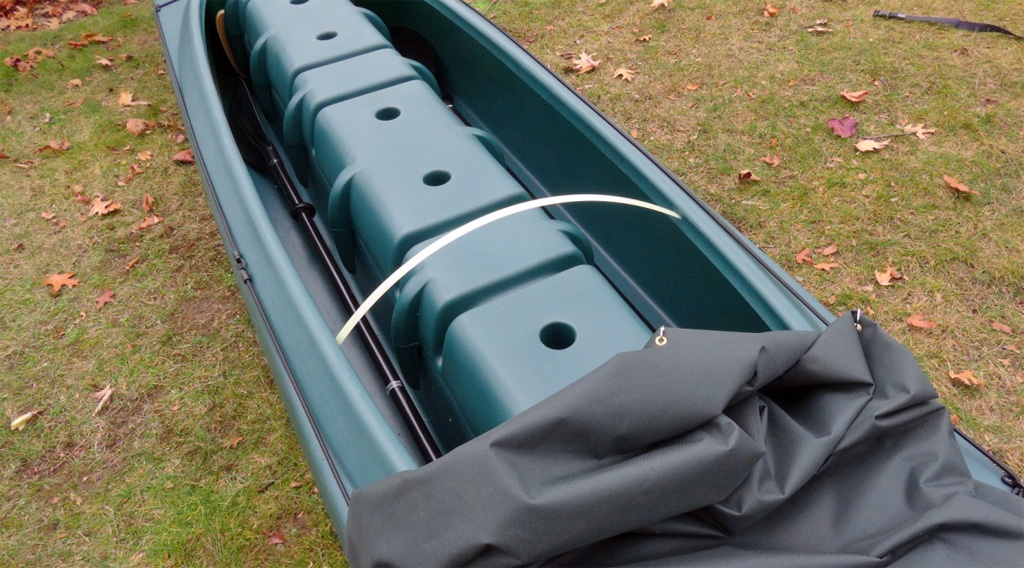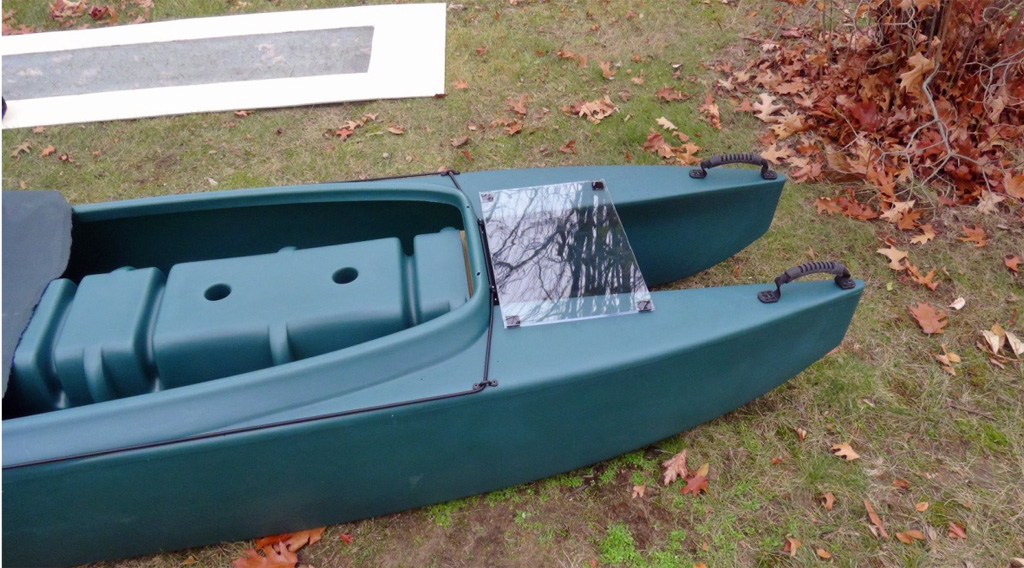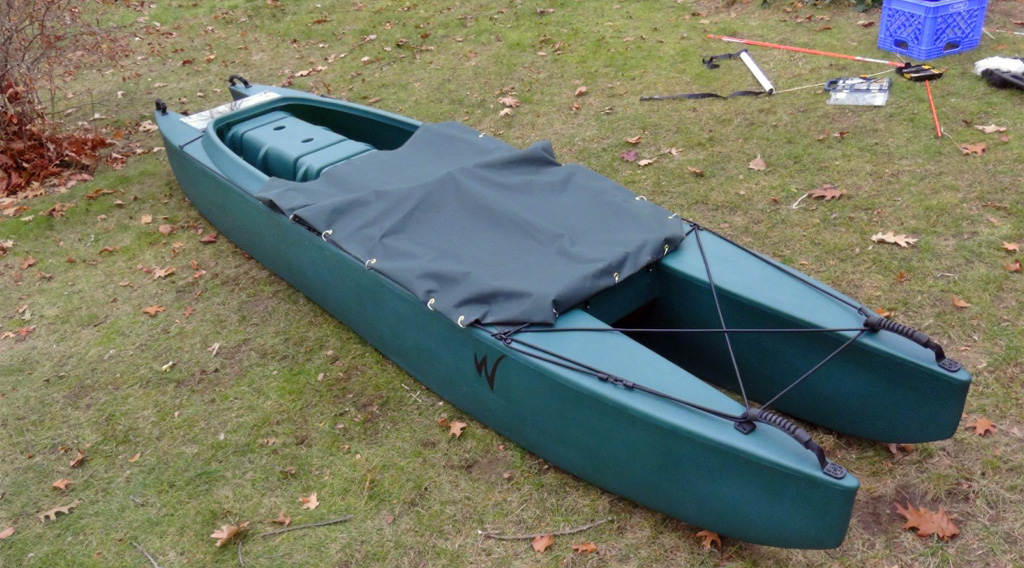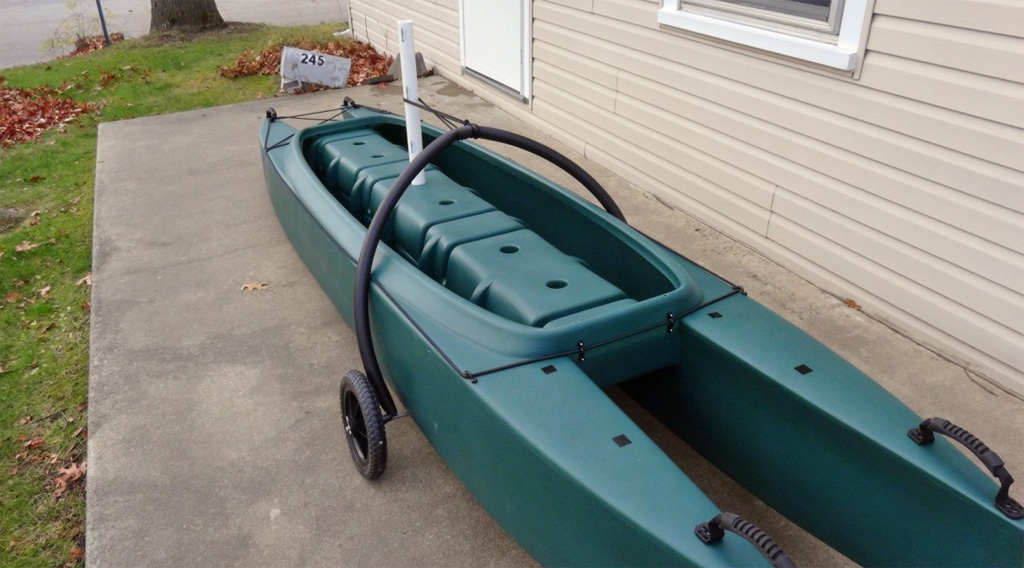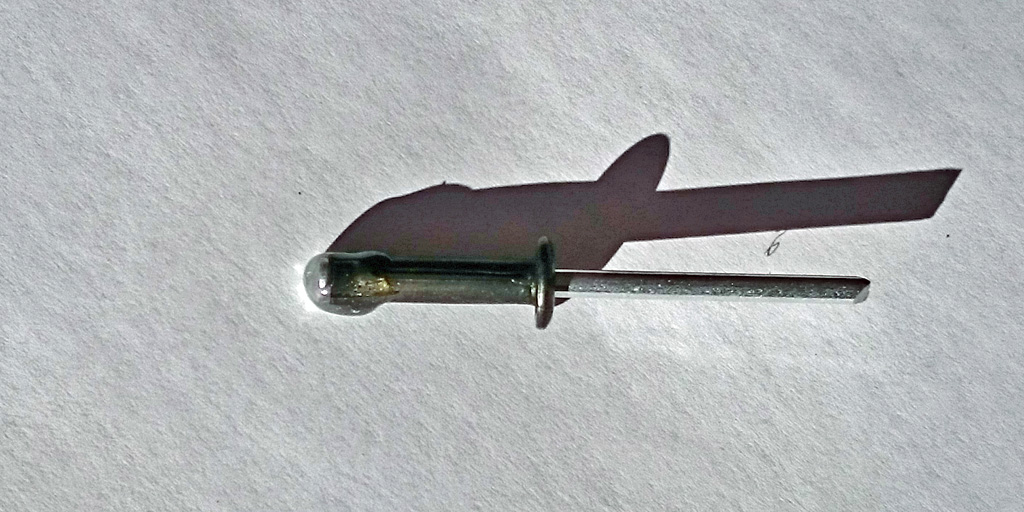By Captain Larry Jarboe
I think the yakkers I passed yesterday weren’t very happy to see me…
Here’s a couple quick pics of my DIY motor bracket and 5 hp long shaft 2 stroke Nissan (really a Tohatsu) outboard motor. I got the refurbished motor from Brandon Kurz at BMK Enterprises near Deerfield Beach. Brandon runs an outboard and small boat repair shop near I-95. He is a great source for affordable long shaft motors for our Wavewalk adventures.
The motor bracket is mostly HDPE decking material with some Azek board. It is glued and screwed with PVC cement and Torx head self tapping stainless screws.
This rock solid bracket is relatively removable with only four thru bolts passing through the upper rear deck. I really don’t like drilling holes in my Wavewalks but I don’t want my Nissan passing my W700.
I estimate that this rig planes at 12 knots. It is a blast to go fast in a USCG designated kayak.
Obviously, a lot more sea trials have to occur. The kayak and stand-up board purists may have a hard time identifying with a cracker yakker zipping past to parts far beyond the reach of paddlers, pole pushers, and pedalers. But, although it may defy convention, having the fastest yak in South Florida does rate bragging rights.
And, I have not yet begun to flout and tout my magic boat!
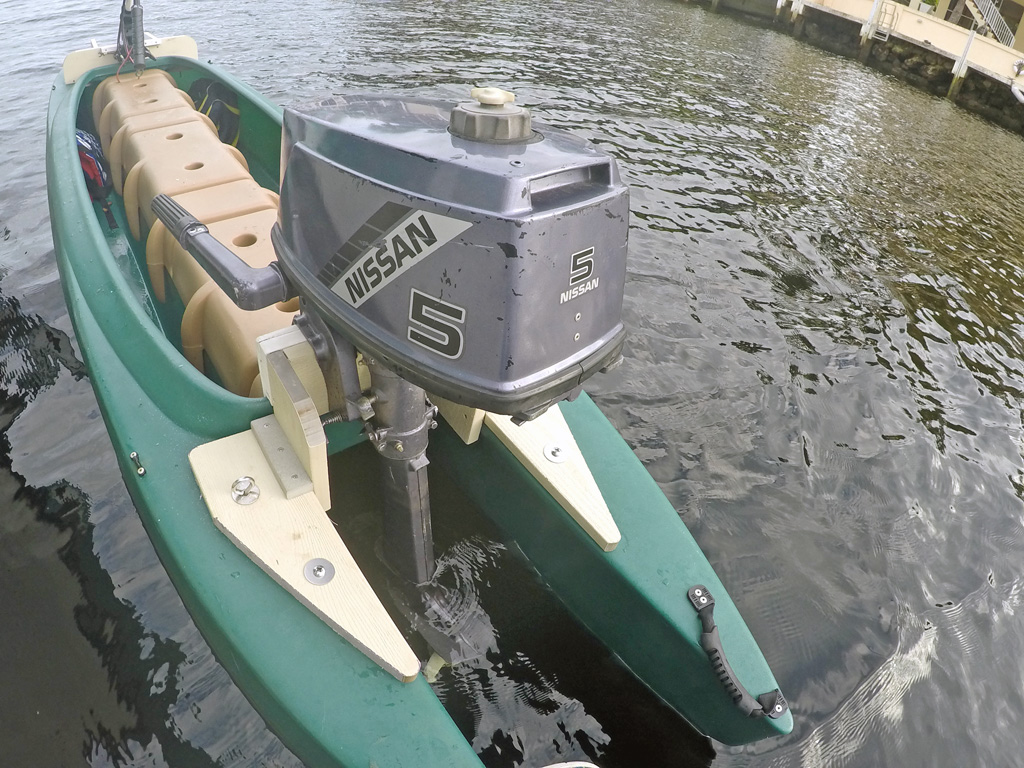
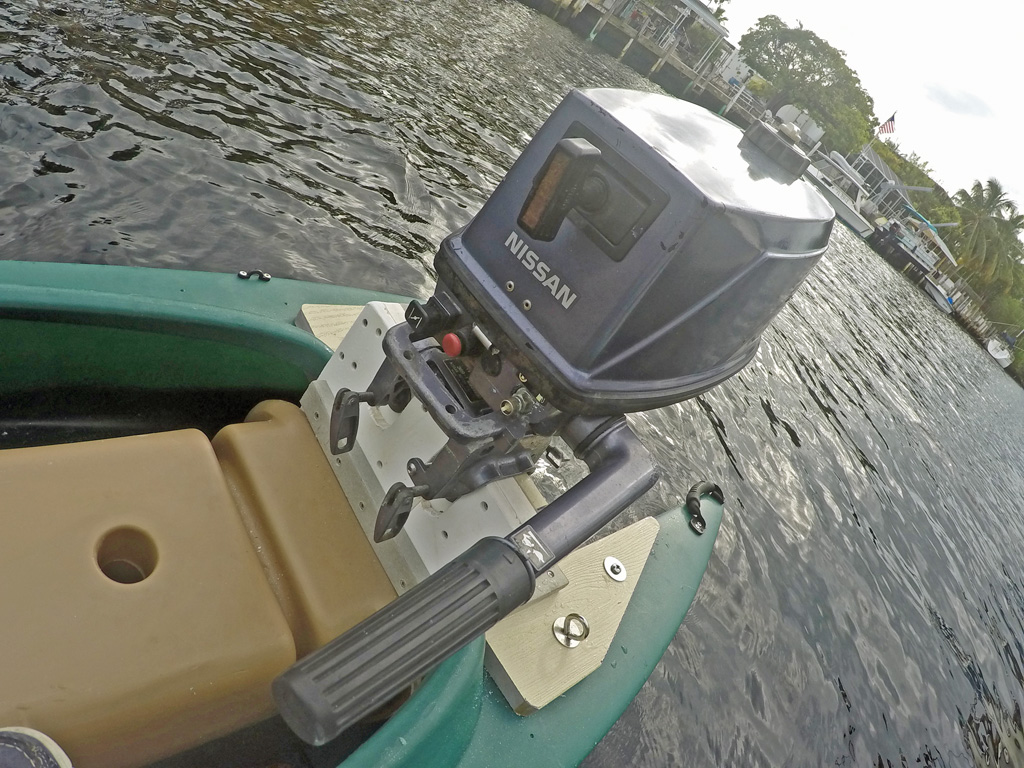
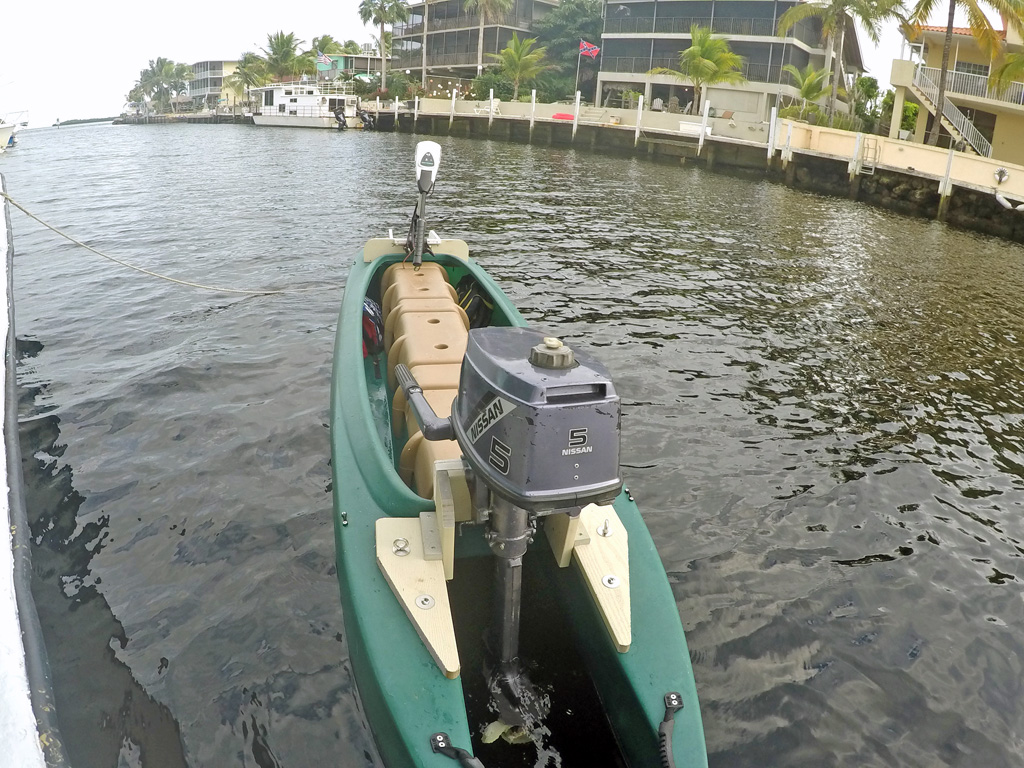
Video added a few days later:
More fishing adventures with Capn’ Larry »


